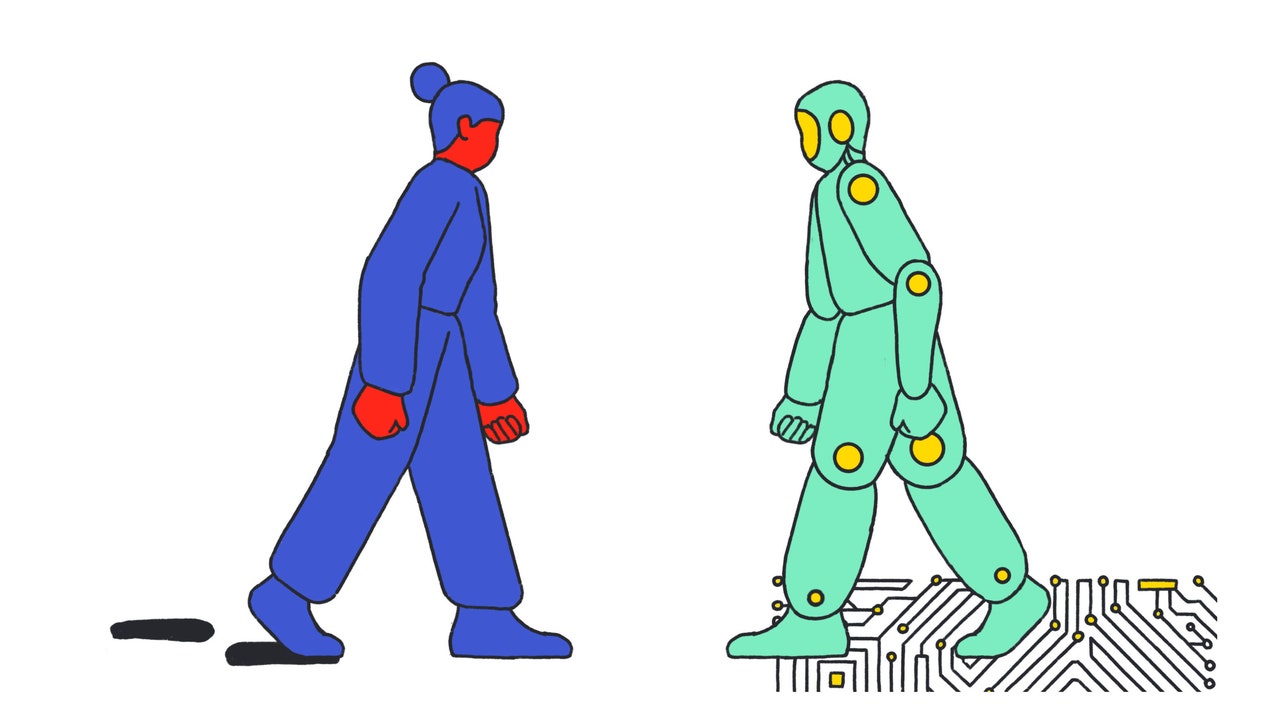Approximately a year ago, the world witnessed the unveiling of ChatGPT by OpenAI, marking a significant moment in the realm of artificial intelligence. This innovative application allowed users to engage in conversations with a computer in a remarkably human-like manner. In just five days, ChatGPT garnered a million users, a number that swiftly escalated to a hundred million monthly users within two months—a figure that has nearly doubled since then. This period could be characterized as the year when many individuals familiarized themselves with interacting, creating, deceiving, and cooperating with automated entities.
Following the debut of ChatGPT, various tech giants swiftly introduced their versions of chatbots: Google introduced Bard, Microsoft integrated OpenAI’s model into its Bing search engine, Meta launched LLaMA, and Anthropic unveiled Claude, a cutting-edge AI assistant designed for diverse tasks. Suddenly, the online landscape appeared almost animated. While artificial intelligence itself was not a novelty, its seamless integration into our daily lives often goes unnoticed—whether it’s a Netflix algorithm suggesting a movie, a credit-card company detecting fraudulent activities, or Amazon’s Alexa providing a news briefing.
Unlike background AI systems that operate in a scripted and rigid manner, chatbots exhibit responsiveness and improvisation. They possess an element of unpredictability. When prompted with queries on unfamiliar topics or tasked with offering creative input, they have the ability to generate content seemingly out of thin air—ranging from poems and literary reviews to research papers and theatrical plays—all articulated in distinctively human language. It’s almost as if these AI entities reflect a mirrored image of ourselves. For instance, requesting ChatGPT to compose a song about self-driving cars in the style of Johnny Cash yields a verse like:
Ridin’ solo, but I’m never alone,
Got my AI ridin’ shotgun, steady as a stone.
On the endless road, under the sky so vast,
A ghost driver at the wheel, footprints of the past.
On the other hand, a request for a song in the style of Giuseppe Verdi sets a scene where a tenor sings:
Ecco la carrozza senza cavallo! (Behold the carriage without a horse!)
Scivola nella notte, silenziosa come il fato. (It glides through the night, silent as fate.)
L’ingegno dell’uomo, l’orgoglio del progresso, (Man’s ingenuity, the pride of progress,)
In questa danza d’acciaio, tessiamo il nostro destino. (In this steel dance, we weave our destiny.)
While these chatbots may not be contenders for prestigious awards just yet, they certainly have a knack for making our smart devices seem rather unintelligent. They are well-versed not only in foreign languages but also in coding languages, capable of summarizing extensive legal and financial documents swiftly and even starting to diagnose medical conditions. However, there is a flip side to this advancement—there is a danger of mistakenly perceiving AI models as genuinely intelligent beings that comprehend the content and implications of their output, which they do not. As linguist Emily Bender and colleagues aptly put it, they are essentially “stochastic parrots.” It’s essential to remember that before AI could exhibit intelligence, it had to assimilate a vast amount of human intelligence. And before we could collaborate with robots, robots had to be taught how to collaborate with us.
To grasp the functioning of these chatbots, we had to familiarize ourselves with a new lexicon—from “large language models” (L.L.M.s) and “neural networks” to “natural-language processing” (N.L.P.) and “generative A.I.” While we have a general understanding of how chatbots operate—by ingesting and analyzing internet content using machine learning that mimics human cognitive processes—they still retain an air of mystery, particularly evident when they “hallucinate.”
For instance, Google’s Bard conjured up false details about the James Webb telescope, while Microsoft’s Bing erroneously claimed that singer Billie Eilish performed at the 2023 Super Bowl halftime show. This unpredictability led to a peculiar incident where an attorney discovered fabricated citations and judicial opinions in their federal court brief sourced from ChatGPT, resulting in a hefty fine. Despite disclaimers acknowledging the potential for errors, such as ChatGPT’s disclaimer stating, “ChatGPT can make mistakes. Consider checking important information,” recent studies indicate a decline in accuracy for specific tasks over the past year. Researchers speculate that this trend may be linked to the training data, although OpenAI’s reluctance to disclose its training material leaves this merely as conjecture.
The awareness that chatbots are fallible hasn’t deterred high-school and college students from embracing them as valuable tools for research, paper writing, problem-solving, and coding tasks. While some view utilizing chatbots for academic purposes as cheating, a significant portion remains inclined to leverage their capabilities. Educational institutions find themselves grappling with the dilemma of whether chatbots serve as learning aids or deceptive instruments. This internal conflict was exemplified when David Banks, the New York City schools chancellor, initially banned ChatGPT only to reverse the decision later, acknowledging the potential of generative AI to support educational endeavors.
In a similar vein, a professor at Texas A&M employed ChatGPT to identify students who had used the chatbot for cheating, leading to a situation where the entire class faced potential failure due to ChatGPT’s inaccuracies. This incident underscores the challenges of navigating and understanding the capabilities of AI products that we are still in the process of comprehending fully.
The proliferation of generative A.I. poses multifaceted challenges, extending beyond academic integrity concerns to potential copyright violations and threats to creative industries. The advent of tools like DALL-E 2 by OpenAI, which transforms text into artificial images, and Stable Diffusion by Stability AI, raises ethical questions regarding the authenticity and impact of AI-generated content. The ability to produce hyper-realistic yet fabricated visual narratives could erode trust in information dissemination and jeopardize the integrity of artistic expression. Efforts to safeguard against misuse, such as watermarking A.I.-generated images, face significant hurdles, with existing methods susceptible to circumvention and manipulation.
As the commercialization of generative A.I. progresses unabated, its integration into various sectors—from healthcare and finance to entertainment and education—presents both opportunities and challenges. The narrative surrounding A.I.’s potential to revolutionize industries coexists with concerns about job displacement, ethical implications, and regulatory oversight. Despite calls for regulatory intervention and ethical considerations, the pace of technological advancement continues unabated, with companies like Samsung poised to incorporate generative A.I. into their flagship devices.
The evolving landscape of artificial intelligence prompts reflection on the delicate balance between innovation and accountability. As society grapples with the transformative power of AI, the need for thoughtful regulation, ethical frameworks, and informed dialogue becomes increasingly apparent. The year 2023 may well be remembered as a pivotal moment when the boundaries between human ingenuity and artificial intelligence blurred, prompting a reevaluation of our relationship with technology and its implications for the future.






